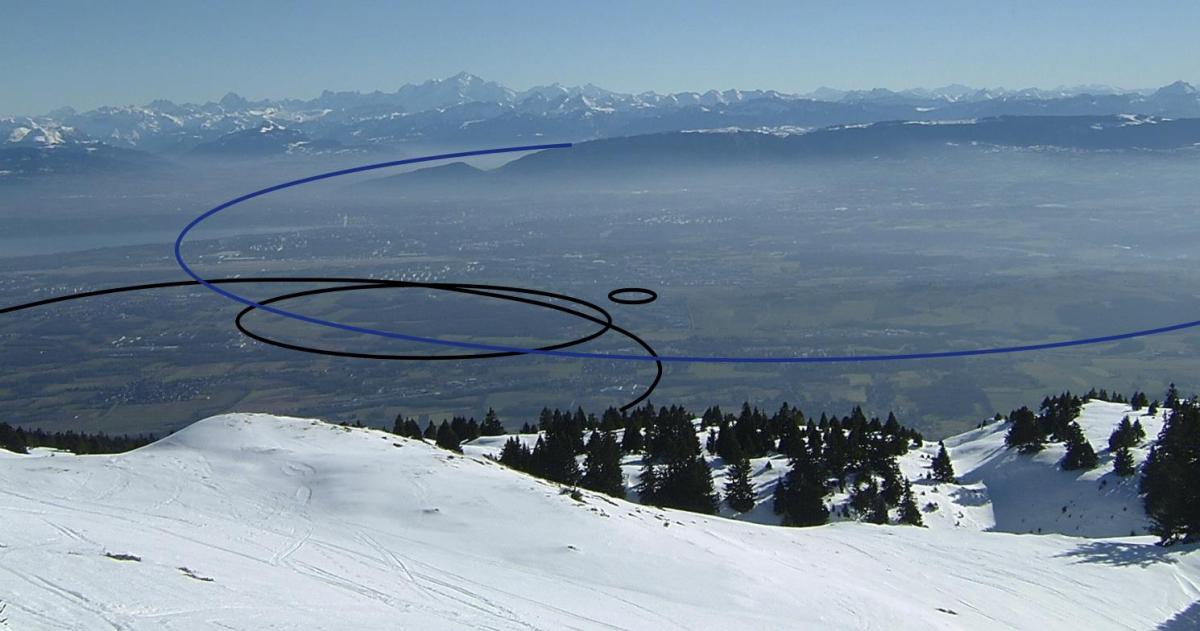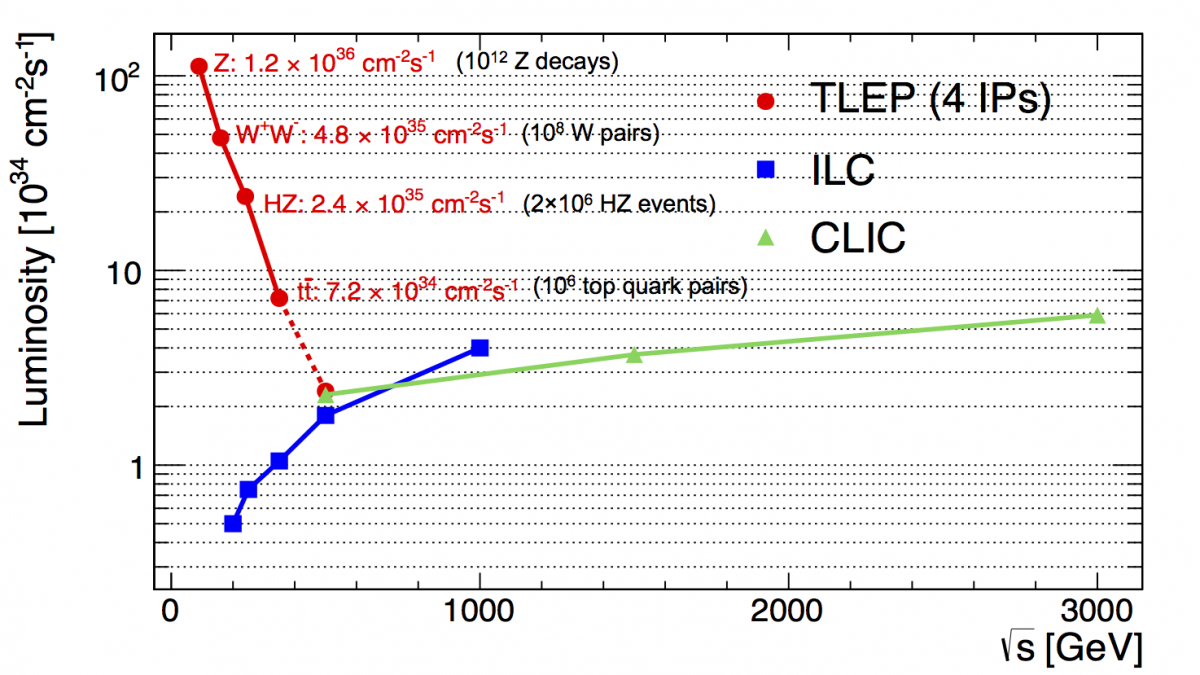A future e+e- circular collider
As discussed during the FCC kick-off meeting, there is more than one variety of FCC under study. Besides the long-term goal of a 100 TeV proton-proton collider, the study includes, as a first step, a 90-400 GeV high-luminosity e+e- machine, FCC-ee, a.k.a. TLEP,sensitive to new physics but not only at very high mass, but also if very weakly coupled to standard particles. Taken together, this complex of machines promises the most powerful combination of searches for new phenomena, addressing most fundamental physics issues in high-energy physics.

Until recently, it was widely thought that LEP would be the last high-energy e+e- storage ring collider: at high energies, synchrotron radiation rapidly limits the energy reach of such a machine, and the risk of missing the top quark or the Higgs boson was just too high. The situation changed radically at the end of 2011 when the first hints for a light Higgs boson started to appear in ATLAS and CMS. A first note discussed an e+e- collider, dubbed LEP3, which could be (re)installed in the LEP/LHC tunnel. Combining the experience gained with LEP2 and B factory ideas, and fixing the total synchrotron radiation power to be no more than 100 MW, a luminosity of over 1034 cm-2s-1 could be contemplated at a centre-of-mass energy of 240 GeV, in up to four interaction points. However, the machine was still limited in energy.
When the study of a 80-100 km tunnel was undertaken at CERN in 2012, it was soon realized that the e+e- collider that would fit in there would be remarkable: the luminosity scales up by a factor 5 at 240 GeV, and the energy can be upgraded to exceed the top-pair threshold. By using the 100 MW RF power, the machine performance at the Z peak is simply mind-boggling: as seen in the graph below, a Tera-Z (1012 Z) factory becomes realistically feasible. As the icing on the cake, the beam-energy spread is also reduced significantly, and transverse beam polarization can be envisioned at least up to the WW threshold, making possible an ultra-precise beam-energy measurement.

As also shown in the graph, in addition to 1012 Z decays, such a machine could provide 2 x 108 W pairs, 2 x 106 HZ events and 106 top pairs, i.e., orders of magnitude above other projects on the market. Such large-statistics samples allow the measurement of the properties of these particles with unprecedented accuracy, and are the tool of choice to discover and study rare Z, W, Higgs boson and top decays. These precision measurements would be highly sensitive to the possible existence of yet unknown particles, up to scales of the order of 30 TeV if weakly coupled, and 10 TeV if coupled to the scalar sector. Thanks to the uniquely clean experimental conditions, sensitive searches for particles with couplings much smaller than weak could be envisaged, such as ‘sterile neutrinos’. A first JHEP article on “The first look at the physics case of TLEP” can be found here. The FCC-ee therefore offers great complementarity with the FCC-hh, which is ideally suited to search directly for coloured particles or heavy resonances up to masses of the order of 30 TeV.
As was discussed at the kick-off meeting, there are many challenges facing the study, starting with a realistic accelerator design that will allow these promises to be fulfilled at all energies. The unprecedented precision in Z, W, Higgs and top measurements at the FCC-ee will also require significant effort in a new generation of theoretical calculations, perhaps beyond the current state of the art but within reach at the timescale required by the FCC-ee, in order to reap the full benefits from their interpretation. Finally, interesting developments will be needed for the detectors to match the physics programme, once the detector specifications are established: large field magnets may be needed, and MAPS for ultra-light trackers or granular calorimeters as well as wireless data acquisition are among the many possibilities to be studied.
Many of the accelerator, theory, and experiment future developments are common with the FCC-hh. After two years of TLEP studies, which shaped the FCC scientific case, the FCC-ee is now part and parcel of the global FCC design study.
To contribute, join us at http://cern.ch/fcc-ee !
Conveners of the FCC-ee Physics and Experiments group for the FCC Kick-off & Study Preparation Team are: Alain Blondel, John Ellis and Patrick Janot
